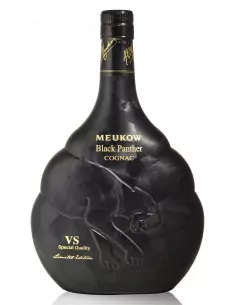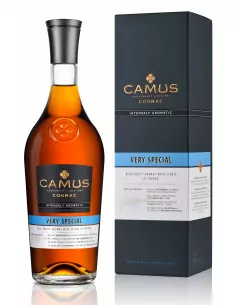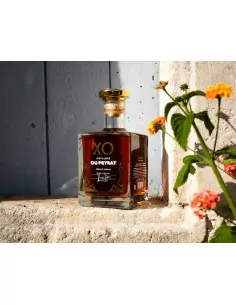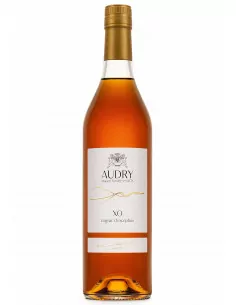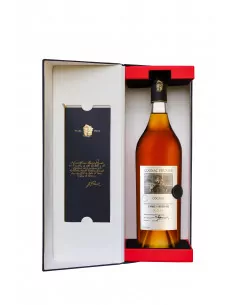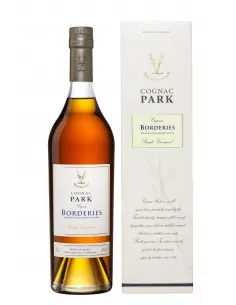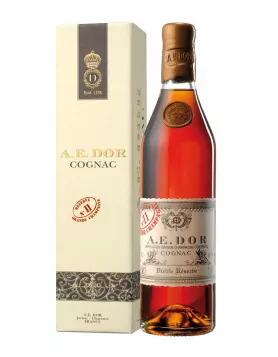
Types of Cognac
Types of Cognac
When it comes to understanding the bewildering terminology of cognac categories, it can leave any of us a little confused. That’s because the laws regarding the aging process of cognac date back many years and have changed very little since their inception.
So, to give you a helping hand we’ve crafted the following guide to demystify all those confusing terms and explain the different grades of cognac; allowing you to determine a VS from an XXO and wow your peers with your in-depth understanding of the world’s favorite brandy.
Before we begin, let’s just clarify a few points. It’s important to understand that no matter whether a cognac is a blend or a single cru they mature, or age, in an identical manner.
However, eau-de-vie from the terroir of Grande Champagne takes much longer to mature than those from the other growth regions. Cognac from the Fins Bois area takes the shortest time of all.
What this means in practical terms is that Grande Champagne cognac takes years (sometimes decades) longer to be honed to perfection. This is one of the factors that’s reflected in the price of the end product.
It is also worth noting that in contrast to a liquor such as whisky, where the name will denote how old the spirit is (21-year old, 12-year old, etc), cognac uses letters instead. Once you understand what these mean it begins to be much clearer as to how old an individual cognac really is.
So now we’re clear on that, let’s shed some light on the official cognac age categories and all the different types of cognac, of which there are a lot nowadays.
VS Cognac
VS: Aged 2 Years + ![]()
Suitable for Cocktails, Mixed Drinks & Cooking
VS Cognac stands for “Very Special” Cognac. A VS Cognac must be aged for a minimum of two years. It is also referred to as ‘Sélection’, ‘De Luxe’ or simply ***. If you see three stars on a cognac bottle, it means it is in the VS age category. This means that the youngest eau-de-vie that was used to create the blend was aged in oak barrels for at least two years.
The aging process sees the liquid taking on the color of wood, but as it’s only for a relatively short amount of time the eau-de-vie end up a light straw yellow/amber color. It may be a little punchy on the palate with a youthful fire, but a young cognac can boast lovely fruity aromas. If you enjoy a rebellious spirit, it’s absolutely fine to enjoy a VS neat or on the rocks. It’s safe to say that VS iOS the suitable cognac to use for making cocktails, long drinks, or any other kind of mixed drink. It should be noted that a VS or *** designation simply tells us the age of the youngest eau-de-vie in the product. This does not prevent a master blender from using older eaux-de-vie in the blend.
VS Cognac is very popular in the US and among young people, Hennessy VS Cognac is particularly loved by its legions of fans around the globe.
VSOP Cognac
VSOP: Aged 4 Years + ![]()
Suitable for Cocktails, On Ice & Cooking
You’re probably wondering what does VSOP mean. Well the official term stands for for “Very Superior Old Pale”, although it is often referred to as “Very Special Old Pale”. The origin of the expression dates back to an order made by the British Royal Court in 1817. King George IV asked the House of Hennessy for a “Very Superior Old Pale”, which would become a benchmark for all cognac houses from then on. At the time it was very common to use sugar and caramel to sweeten cognac, and this description alluded to one created without these additives.
To classify as a VSOP Cognac, the youngest eau-de-vie in the blend must be at least four years old. As in any other age category, this does not prevent the master blender from using much older eaux-de-vie in order to achieve the perfect harmony for the final cognac blend. As a result, the average age of a VSOP is often much older than the minimum requirement of four years.
Some use fullstops after the letters, V.S.O.P., which is nothing else than a stylistic preference. This age designation is also labeled “Very Superior Special Pale”, “Very Old”, or simply “Réserve” or “Vieux”.
So which is better - VS or VSOP? Again, it all comes down to personal preference. If a cognac has been aged for longer, it does not necessarily mean it is better. Younger cognacs, such as a VS, tend to have a fresher, livelier aromas of fruit, where as older eaux-de-vie such as VSOPs tend to be smoother, with clear notes of oak and spices.
There are some very good VSOPs on the market, many of which are delicious drunk neat. However, this category has become a favorite with mixologists as a potent element of a cognac cocktail. This makes cognacs from this category a really versatile addition to any good liquor collection.
Some VSOPs of note include, Hennessy VSOP and Remy Martin VSOP.
XO Cognac
XO: Aged 10 Years + ![]()
Suitable on ice, neat & paired with food
Selection Olivier Blanc S.O.B. XO Artisanal Francois Voyer Grande Champagne





So what does XO mean for Cognac? The terminology stands for ‘Extra Old’ and describes a cognac consisting of eaux-de-vie that have been aged in oak barrels for a minimum of 10 years. Just like VS (Very Special) and VSOP (Very Superior Old Pale), Extra Old is another English expression, which shows the strong connection to foreign countries, especially Great Britain and America.
“XO” was coined by Cognac Hennessy and first used in 1870. Even though the youngest blend in an XO Cognac can be as young as ten years, a XO usually has an average age of between 15 and 20 years, sometimes older. So how old is a Cognac XO officially? As of 2018, the Bureau National Interprofessionnel du Cognac (BNIC) increased the minimum XO cognac age for the youngest eau-de-vie from six to ten years, in an effort to improve the quality of the spirit across the board.
The XO is the ‘gold standard’ by which cognac houses are typically judged, although the recent addition of the XXO category has outdone it. However, if you’re looking for a good cognac, an XO can tell you a lot. So what does XO cognac taste like? The time spent in the barrels can influence the cognac significantly, and an exceptional XO will be rich and luxurious with warm spice, toffee, chocolate, nuts and dried fruit.
There are many exceptional XO Cognacs for you to try, and we recommend that you taste as many as possible. But if you’re looking for some recommendations then of course the original XO, Hennessy XO Cognac, is a good place to start. You can also check out our articles: “10 Best XO Cognacs: A family tasting in lockdown” and “10 XO Cognacs: Best Value for Money or Just the Best Brands” for inspiration.
XXO Cognac
XXO: Aged 14 Years + ![]()
Suitable on ice, neat & paired with food
XXO stands for ‘extra extra old’, and is a relatively new category that was officially added to the description of cognac ages in 2018. Just as with the other age descriptions of cognac, VS, VSOP and XO, an XXO Cognac consists of eau-de-vie that’s been aged within French oak barrels. But in the case of an XXO, the minimum length of aging to qualify is 14 years. This makes an XXO cognac the oldest official rating a cognac can hold.
Of course, there are other commonly used expressions that describe cognacs that have been aged well beyond these 14 years. These include Hors d’Age, Extra, and Tres Vieille Réserve. However, these are not official categories. So not matter how old a cognac might be, it falls into the XXO category. In fact, before the landmark 2018 ruling brought about by Hennessy and other cognac producers, any cognac that had been aged for more than six years was counted as an XO, even if it was more than a century old!
You can read more about this groundbreaking new category in our article ‘XXO Cognac: What does it mean?’ And if you fancy a tasting, the Martell Chanteloup XXO Cognac is a wonderful example from this age category.
Napoleon Cognac
Napoleon: Aged for a minimum of 6 Years + ![]()
Suitable on ice, neat & paired with food
Remi Landier Napoleon Viti-Collection Organic Cask Single Lot 2011 Cognac





What is Napoleon Cognac?
An unofficial age designation, “Napoleon” Cognac technically falls within the official classification of a V.S.O.P which requires eaux-de-vie to be aged for a minimum of four years. However, a V.S.O.P Cognac may be referred to as a Napoleon if it has been aged for more than six years.
The origin of this name goes back to the French Emperor Napoleon and the Cognac House Courvoisier. Legend has it that Napoleon took crates of Courvoisier Cognac into exile with him to the island of St Helena, and the crew coined the cognac as “Cognac Napoleon”. Find out more about Napoleon in our sensational interview with him.
It is of course recommended to try the favorite of the man himself and taste Courvoisier Napoleon Cognac.
Réserve Cognac
Reserve: Aged for an average of 25 Years + ![]()
Suitable neat and paired with food
Officially, like an XO Cognac, the youngest eau-de-vie in a ‘Réserve’ has to be aged for a minimum of 10 years. The average age is much older than that for a good Réserve Cognac though.
A “Réserve Familiale” or a “Vieille Réserve” is a blend that uses very old eaux-de-vie from the Cognac House’s or the family’s “Paradis” cellars, the place where the oldest and most valuable barrels are stored. Due to the sparsity of the older eaux-de-vie, the amount of bottles produced is limited and obviously higher in price. A Réserve is a higher quality cognac than a XO, Napoleon or an Extra.
Often, the cognac brands design a bottle especially for their Réserve, or create the blend for a special occasion such as an anniversary. The next level up from a Réserve is an Hors d’Age Cognac.
Hors d'Age Cognac
Hors d'Age: Aged for between 30 and 50 years, or even 100 years + ![]()
Suitable to enjoy neat
Francois Voyer Hors d'Age Coffret Grande Champagne





Hors d’Age means “beyond age” and is the age category that describes the highest quality Cognac, in terms of age that is. Officially it is classified in the XO age denomination, but it is used for cognacs that have an average age of 30 years and above. Hors d’Age blends can be 30, 40, 50, even up to 100 years old. A Cognac hors d age is amongst the oldest cognacs you can get, together with an ancestral, or perhaps a Très Vieille Réserve.
If you’re looking for some recommendations of Hors d’Age cognacs to try, then Comte Joseph Cognac Hors d Age is a popular choice, or you can check out our article: 9 Best Hors d’Age Cognac.
Extra Cognac
Extra: Aged on average for between 15 and 25 years + ![]()
Suitable to drink neat
Just like an XO, the youngest eau-de-vie in an Extra cognac must have been aged for a minimum of 10 years, however an Extra cognac will have been aged for well over the minimum requirement.
It’s generally regarded that a cognac of an Extra quality is superior to that of an XO. If you’re looking for a bottle that is more than just special, an Extra cognac is your perfect choice.
A Camus Extra Cognac is an excellent choice if you fancy trying this category.
Cuvée Cognac
The Cuvée classification does not necessarily refer to age. Technically it describes one particular blend or batch. It is especially used in the Champagne classification, not so much in cognac. When it appears on a cognac bottle, it usually means the producer wants to give it a special name instead of using the age categories VSOP and XO. It might refer to a limited amount of a certain blend.
FAQs
VS stands for “Very Special” cognac. This classification refers to a cognac that has been aged for a minimum of two years. It is also referred to as “Sélection”, “De Luxe”, or ***.
VSOP stands for “Very Superior Old Pale”, this is a cognac that has been aged for a minimum of four years. This category is also sometimes called, “Very Superior Special Pale”, “Very Old”, “Réserve” or “Vieux”.
An XO cognac must be aged for a minimum of 10 years, in comparison a VSOP must age for a minimum of four years. It comes down to personal preference which is better but an XO is usually considered as superior.
Hors d’Age translates to “beyond age”, this unofficial age category refers to cognacs from age 30 years and up.
There are four official age categories of cognac: VS, VSOP, XO and the recent addition of XXO. However, there a number of other unofficial classifications such as Napoleon, Hors d’Age and Vintages.


























































